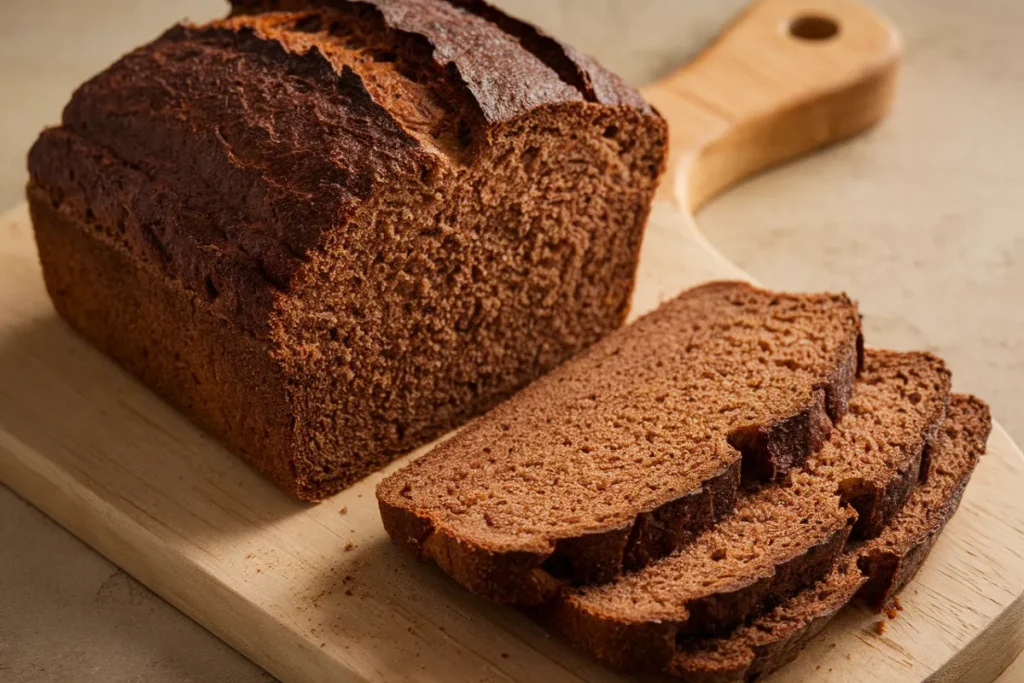Gluten-free sourdough bread has emerged as a beloved alternative for those seeking to avoid gluten without sacrificing the rich, tangy flavor and chewy texture that traditional sourdough is known for. This recipe offers a delightful balance between taste and health, providing a fulfilling bread experience even for those on a gluten-free diet. With the right ingredients and techniques, you can create a loaf that rivals any gluten-containing sourdough, right in the comfort of your home.
Why Choose Gluten Free Sourdough Bread Recipe?
Choosing gluten-free sourdough isn’t just about avoiding gluten; it’s about embracing a bread-making process that celebrates natural fermentation, which is often easier on the digestive system. Sourdough fermentation helps to break down some of the components in flour that can cause digestive discomfort, even for those who are not strictly gluten intolerant. The fermentation process also contributes to the bread’s unique flavor, which is deeper and more complex than that of bread made with commercial yeast.
Understanding Gluten-Free Flours
Gluten-free baking requires a different approach than traditional baking due to the absence of gluten, the protein that gives bread its structure and chewiness. Instead of relying on a single flour type, gluten-free bakers often use a blend of flours to achieve the desired texture and flavor.
Some popular gluten-free flours include:
- Rice Flour: A versatile, mild-flavored flour that forms the base of many gluten-free flour blends.
- Tapioca Flour: Adds elasticity and a slightly sweet taste to gluten-free dough.
- Sorghum Flour: Offers a neutral flavor and a texture similar to wheat flour.
- Almond Flour: Brings moisture and a rich, nutty flavor to the bread.
- Buckwheat Flour: Known for its earthy flavor, buckwheat adds depth and color to the loaf.
Combining these flours in the right proportions is key to achieving a dough that behaves similarly to one made with wheat flour.
The Science Behind Sourdough Fermentation
Sourdough bread is leavened naturally by the action of wild yeast and lactic acid bacteria present in the starter. This natural fermentation process not only helps the bread rise but also develops its characteristic tangy flavor. In gluten-free sourdough, this process is especially important, as the absence of gluten makes it more challenging to achieve the right texture.
During fermentation, the wild yeast in the starter breaks down the sugars in the flour, producing carbon dioxide, which creates the bubbles that make the bread rise. The lactic acid bacteria contribute to the bread’s tangy flavor and also act as a natural preservative, extending the shelf life of your bread.
Key Ingredients for Gluten-Free Sourdough
To make gluten-free sourdough bread, you’ll need a few essential ingredients:
- Gluten-Free Flour Blend: A combination of flours like rice, tapioca, and sorghum.
- Sourdough Starter: A mixture of gluten-free flour and water that has been fermented with wild yeast and bacteria.
- Water: Essential for hydrating the flour and activating the yeast.
- Salt: Adds flavor and strengthens the dough’s structure.
- Olive Oil (optional): Helps to keep the bread moist and adds a slight richness to the flavor.
These ingredients form the foundation of your gluten-free sourdough bread, each playing a crucial role in the final product.
Starter vs. Commercial Yeast: What’s the Difference?
One of the most distinctive features of sourdough bread is the use of a natural starter instead of commercial yeast. A starter is a live culture made from flour and water that ferments over time, developing the wild yeast and bacteria needed to leaven the bread. This process creates a more complex flavor profile and a chewy, airy crumb that is characteristic of sourdough.
Commercial yeast, on the other hand, is a single strain of yeast that acts much faster than a starter. While it produces a quicker rise, it lacks the depth of flavor and texture that comes from natural fermentation. For gluten-free sourdough, using a starter is particularly important, as it helps to create the structure and flavor that can otherwise be challenging to achieve.
How to Make a Gluten-Free Sourdough Starter
Creating your gluten-free sourdough starter is the first step in making delicious bread. Here’s a simple guide to get you started:
Ingredients:
- ½ cup gluten-free flour (rice, sorghum, or a blend)
- ½ cup water
Instructions:
- Day 1: Mix the flour and water in a jar until well combined. Cover the jar loosely with a cloth and let it sit at room temperature for 24 hours.
- Day 2: Check your mixture for bubbles, a sign of fermentation. Discard half of the mixture and feed it with another ½ cup of flour and ½ cup of water. Stir well, cover, and let it sit for another 24 hours.
- Days 3-7: Repeat the feeding process daily. By the end of the week, your starter should be bubbly and have a pleasant, tangy aroma.
Your gluten-free sourdough starter is now ready to use in your bread recipe.
Feeding and Maintaining Your Starter
A healthy starter is the key to successful sourdough bread. To keep your gluten-free starter active and ready for baking, you’ll need to feed it regularly. If you’re baking frequently, feed your starter daily. If you bake less often, you can store it in the refrigerator and feed it once a week.
When feeding your starter, always discard half of the mixture before adding fresh flour and water. This keeps the yeast and bacteria in balance, preventing it from becoming too acidic or inactive.
Common Challenges with Gluten-Free Sourdough
Baking gluten-free sourdough can be challenging, especially if you’re new to gluten-free baking. Common issues include dense texture, lack of rise, or overly sticky dough. Here are some tips to troubleshoot these problems:
- Dense Texture: This can be caused by under-fermentation or too little hydration. Ensure your dough is well-hydrated and allow it to rise fully before baking.
- Lack of Rise: Your starter might not be active enough. Make sure it’s bubbly and vigorous before using it in your dough.
- Sticky Dough: Gluten-free dough is often stickier than wheat dough
For a delicious and healthier alternative, don’t miss out on trying this Gluten-Free Sourdough Bread Recipe. Perfect for anyone seeking to enjoy sourdough while staying gluten-free!

